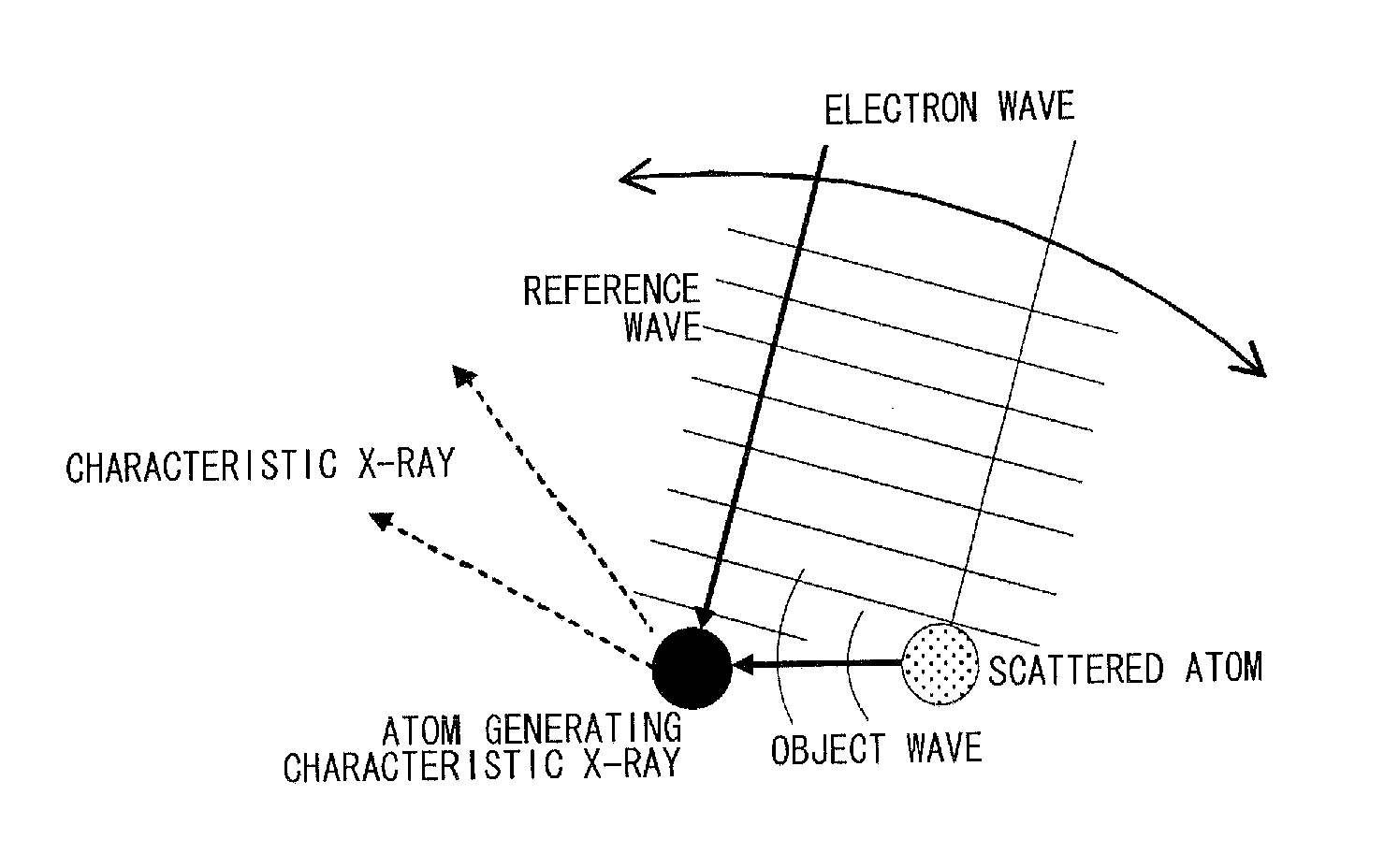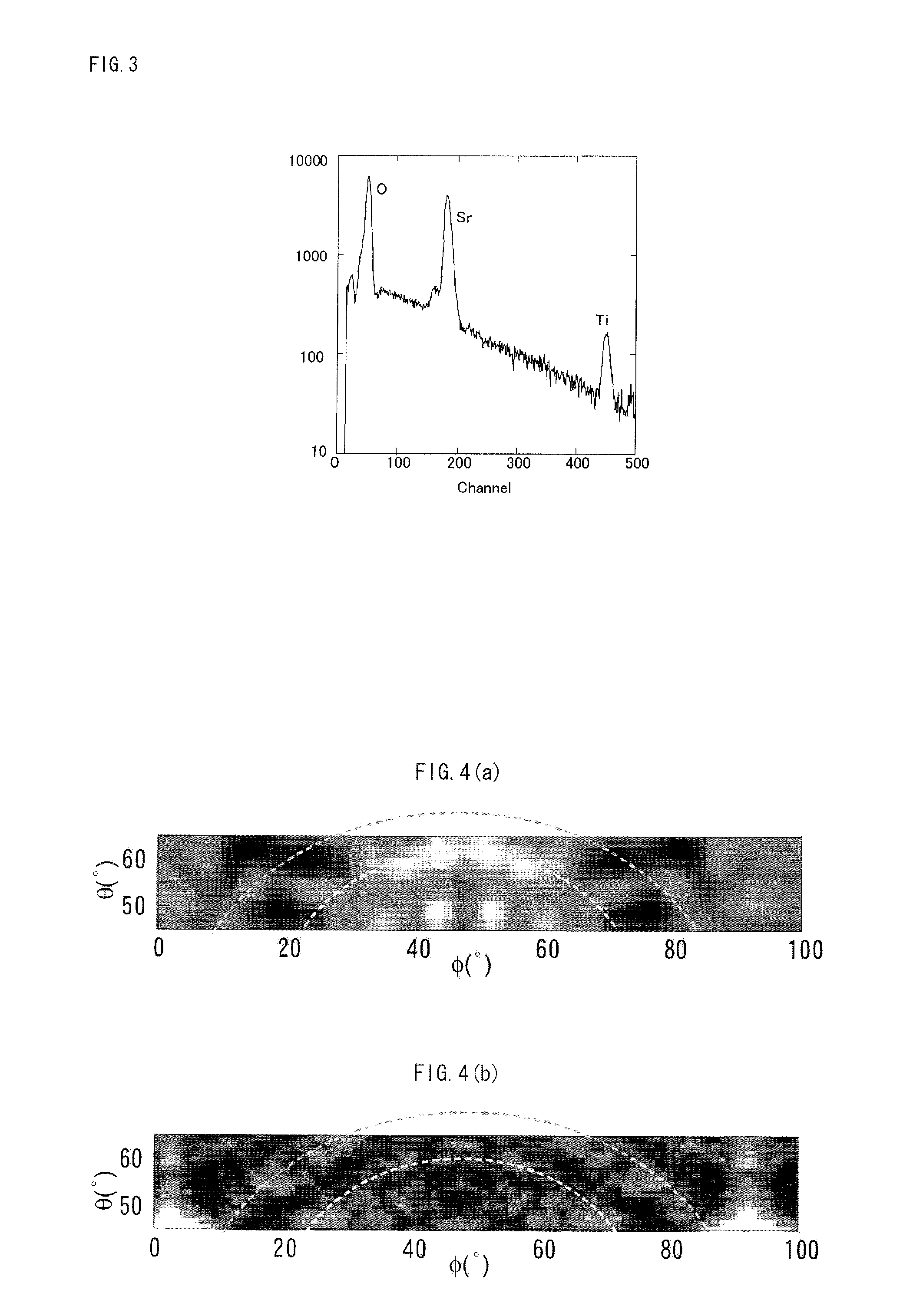Reverse x-ray photoelectron holography device and its measuring method
a photoelectron and holography technology, applied in the direction of instruments, x/gamma/cosmic radiation measurement, material analysis using wave/particle radiation, etc., can solve the problems of inability to measure a large number of test samples, inability to readily available, and limited measurement time, so as to achieve high-precision atomic images, easy detection of characteristic x-rays, and extreme ease of measurement
- Summary
- Abstract
- Description
- Claims
- Application Information
AI Technical Summary
Benefits of technology
Problems solved by technology
Method used
Image
Examples
Embodiment Construction
[0034]Embodiments of the present invention will be described in detail hereinafter with reference to the annexed drawings.
[0035]FIG. 1 shows the principle of inverse X-ray photoelectron holography. An embodiment of the present invention will be described using FIG. 1. Electrons (waves) are directed toward atoms that constitute a structure characteristic of the solid in a solid measurement sample from an electron gun by using a inverse X-ray photoelectron holography device or the like. The electrons are made to strike and excite the measurement sample, and characteristic X-rays are generated by the atoms that constitute the structure of the measurement sample. Because of the phenomenon in which the electrons arrive directly without being scattered by other atoms when the characteristic X-rays are generated, the electron wave in holography formed in this manner is considered to be a reference wave.
[0036]Next, a phenomenon occurs in which an electron wave that has caused a single cycle...
PUM
 Login to View More
Login to View More Abstract
Description
Claims
Application Information
 Login to View More
Login to View More - R&D
- Intellectual Property
- Life Sciences
- Materials
- Tech Scout
- Unparalleled Data Quality
- Higher Quality Content
- 60% Fewer Hallucinations
Browse by: Latest US Patents, China's latest patents, Technical Efficacy Thesaurus, Application Domain, Technology Topic, Popular Technical Reports.
© 2025 PatSnap. All rights reserved.Legal|Privacy policy|Modern Slavery Act Transparency Statement|Sitemap|About US| Contact US: help@patsnap.com



